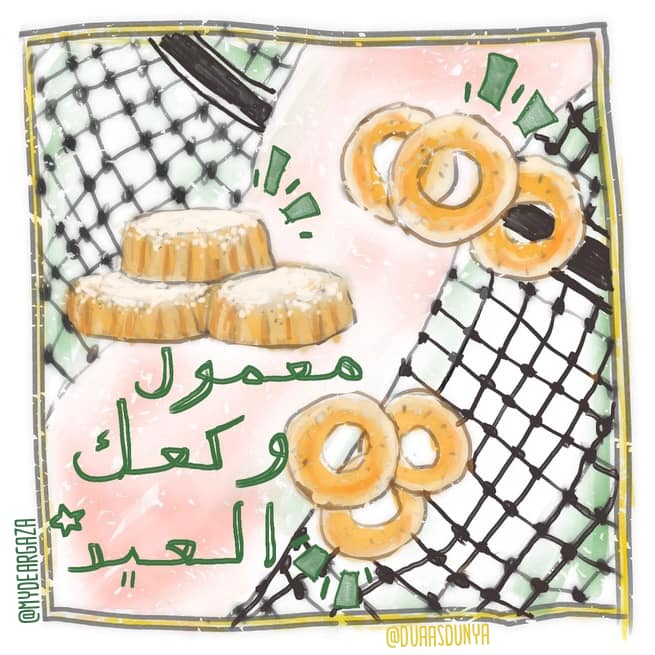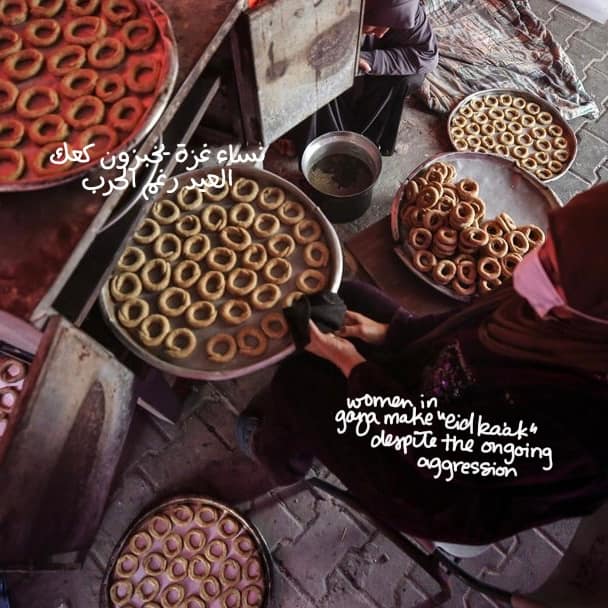In the land that whispers tales of resilience, food becomes a vessel of heritage and innovation alike.
Amidst Gaza’s golden sands and azure skies, indigenous crops like dates, olives, and citrus fruits paint a vibrant tapestry of flavors passed down through generations. Each dish, a mosaic of tradition and innovation, bears the imprint of secrets of our sittat, weaving stories of love and sustenance. From the sizzle of falafel in bustling market stalls to the fragrant embrace of maqlubah in family kitchens, Gaza’s cuisine mirrors the kaleidoscope of its people’s history. Yet, beyond the hearth, Gaza’s culinary scene dances with experimentation, embracing new flavors and influences with open arms — a testament to its people’s open-mindedness and creativity. Amidst the chaos of conflict, food remains a steadfast companion, bridging divides and nurturing both body and soul.
Here, on My Dear Gaza, we are dedicated to exploring, archiving, and sharing the food traditions and culture of Gaza.
Read on to learn about such traditions and culture. And consider cooking and eating like a Gazan. You can do so by trying new recipes and participating in My Dear Gaza’s very own #greenforgaza on social media (more details below)!
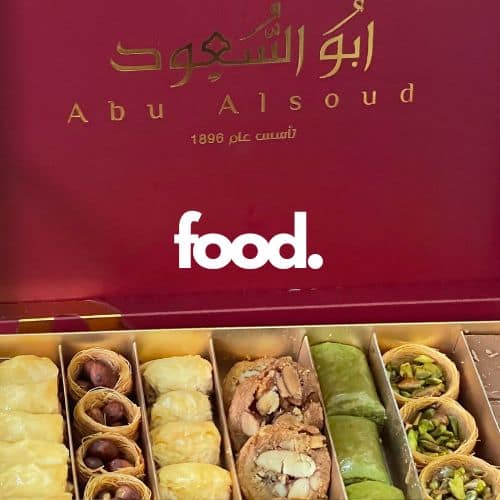
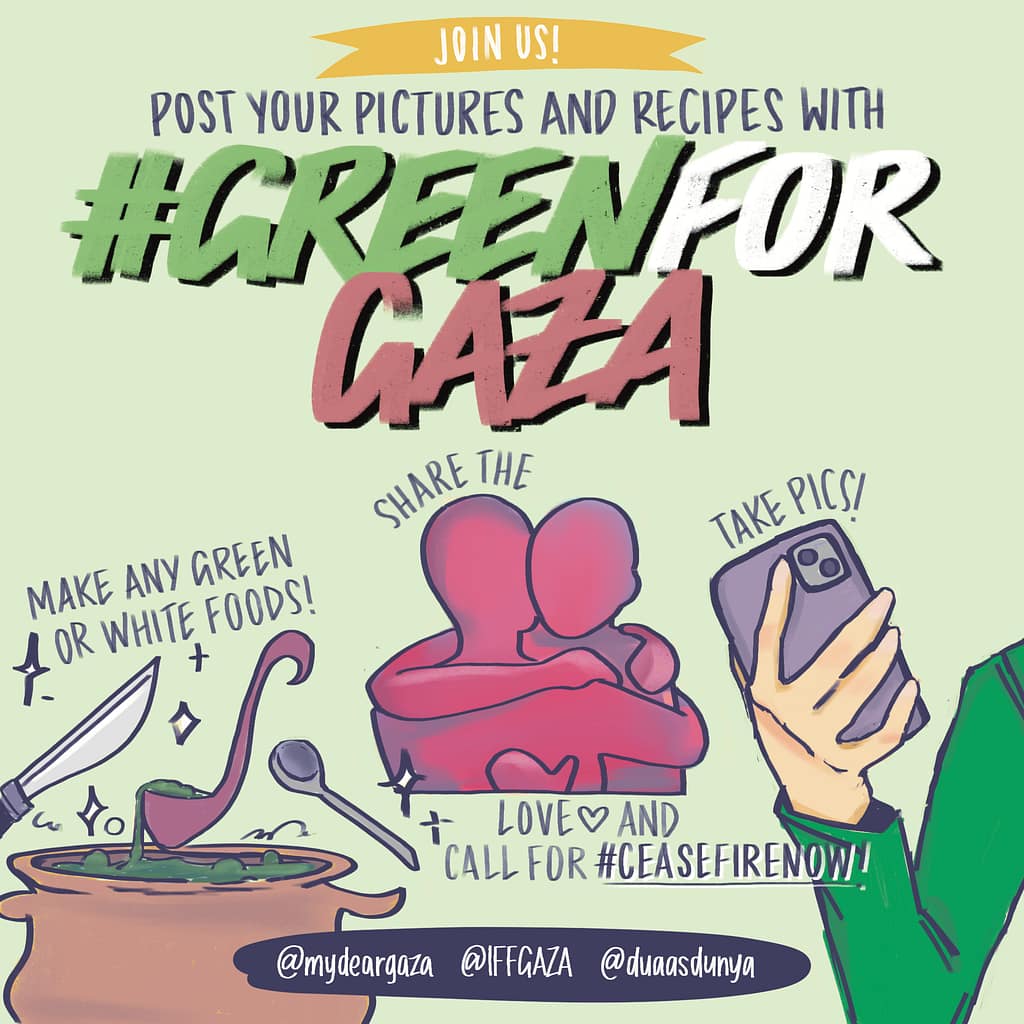
Ramadan Food Traditions.
Click here to read more!
Ramadan is the Islamic holy month during which Muslims fast daily from dawn to sunset. It is a holy month during which Muslims try to do as much good as possible. While the focus is on religious growth and activities, it is common that Muslims have Ramadan-specific foods and food traditions.

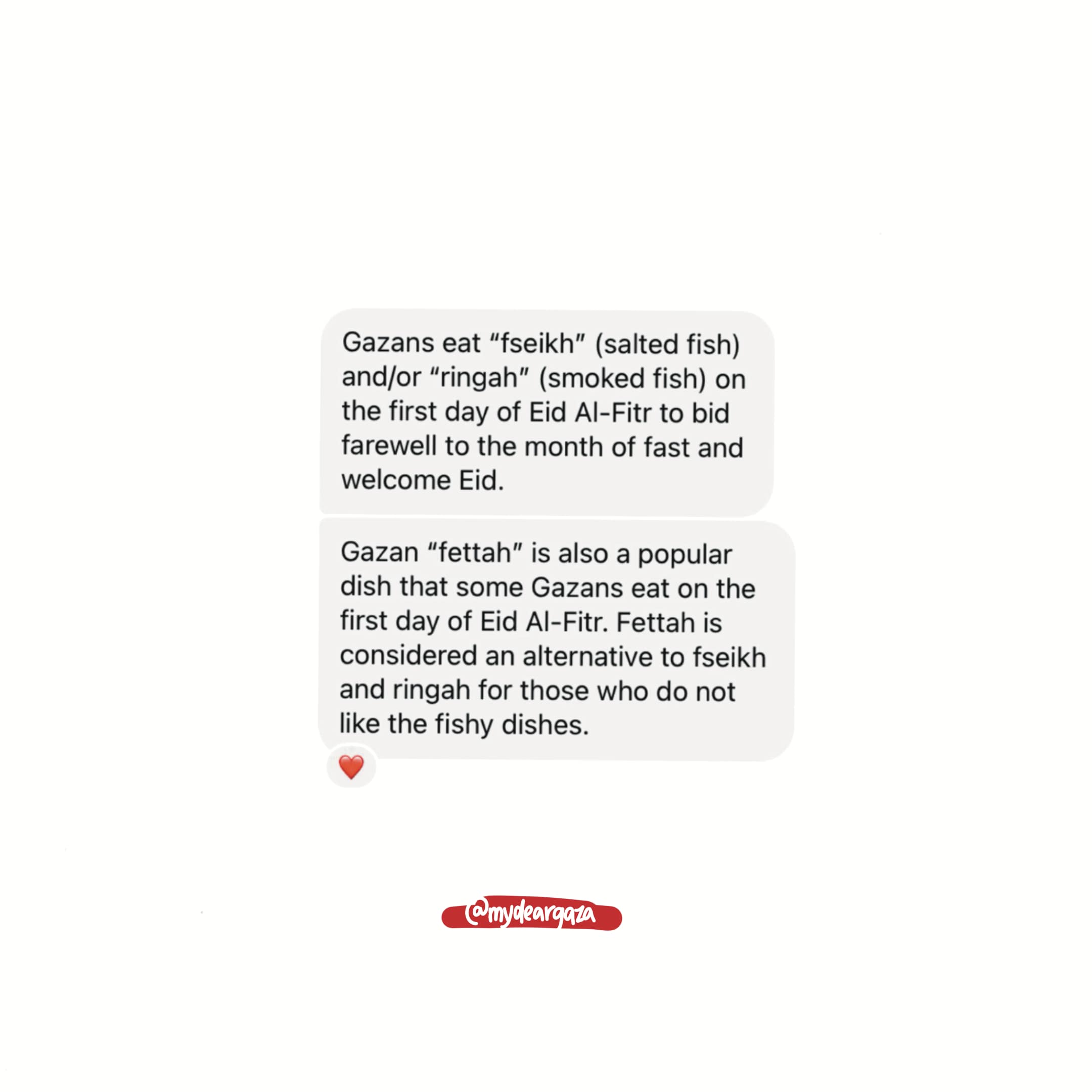
Eid Al-Fitr Food Traditions.
Click here to read more!
Eid Al-Fitr, which means the Festival of the Breaking of the Fast, is the three-day holiday that follows the conclusion of the month of Ramadan. Often translated to simply mean “Feast,” Eid Al-Fitr is a time of celebration, spending time with loved ones, and eating copious amounts of delicious food.

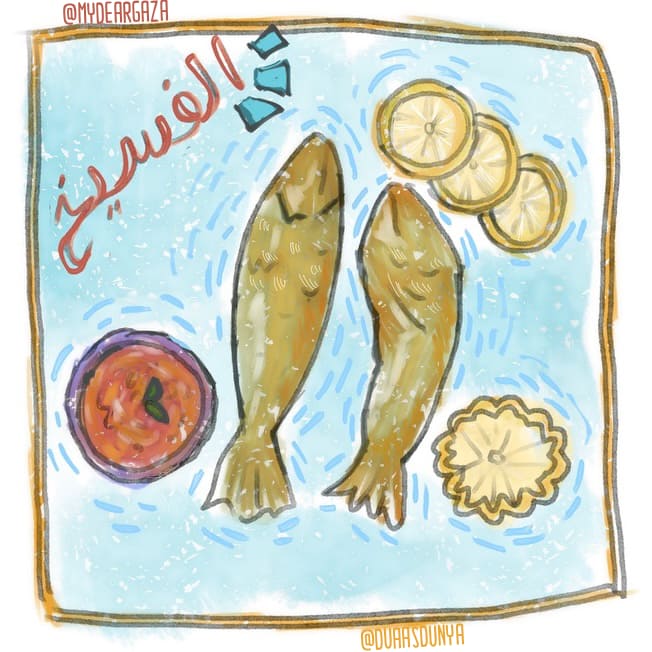
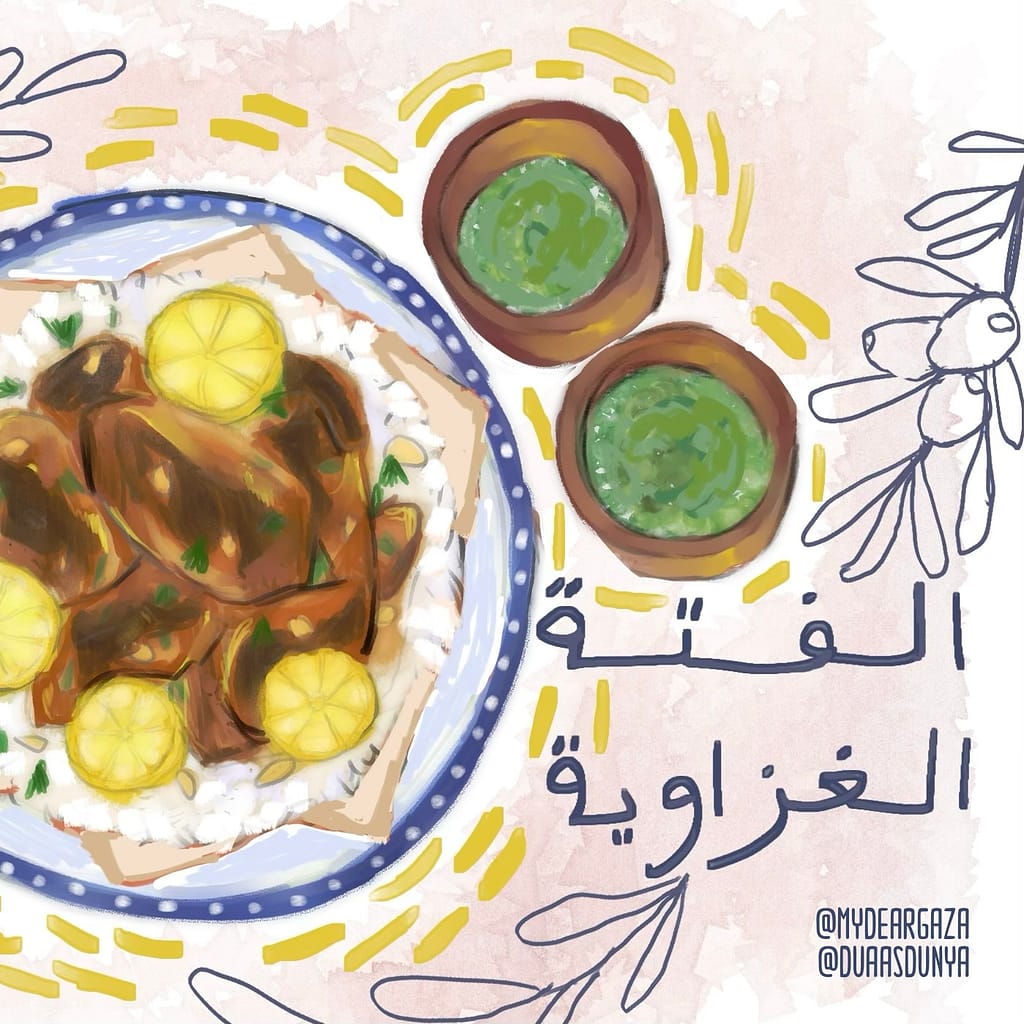
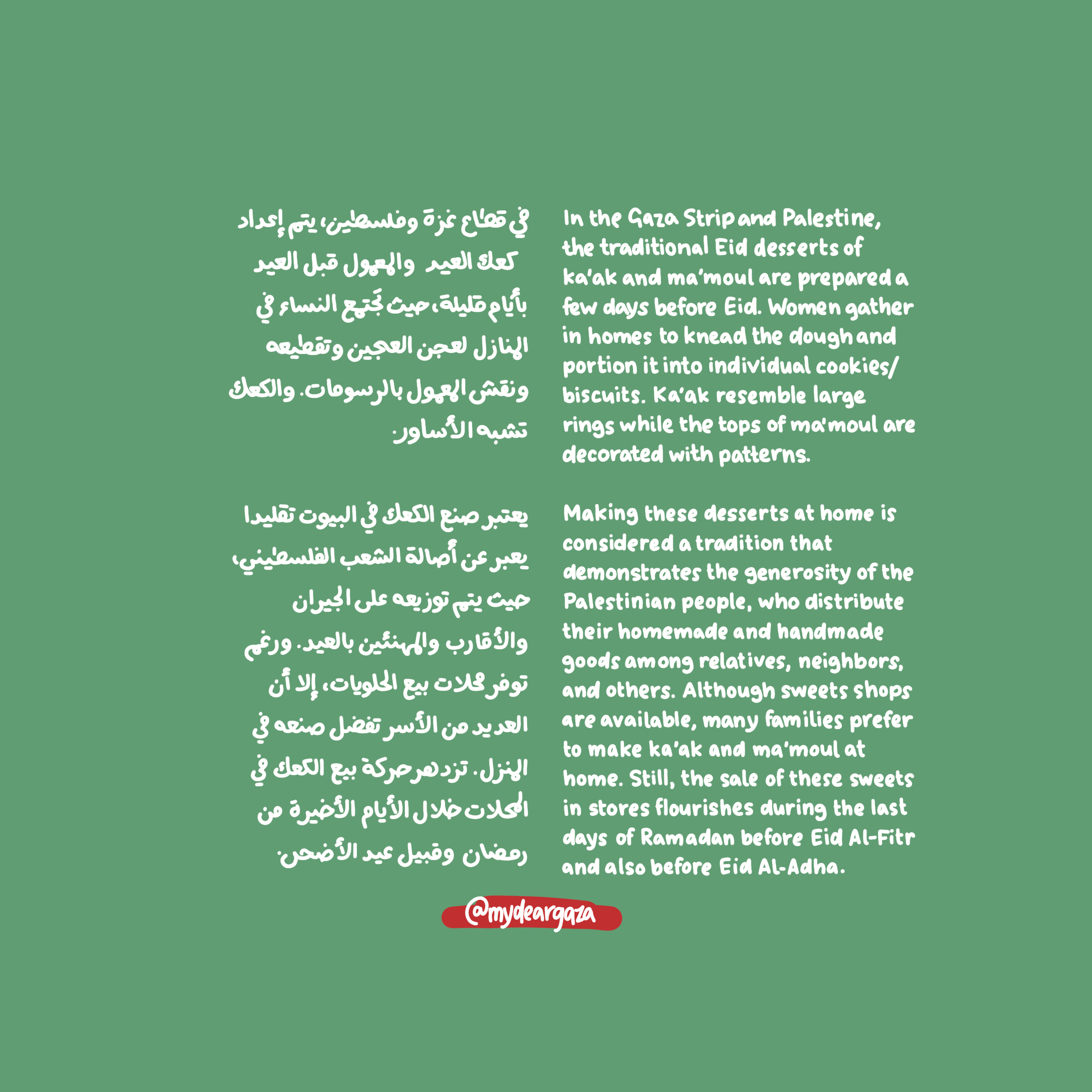
Eid Al-Fitr Sweets Traditions.
Click here to read more!
